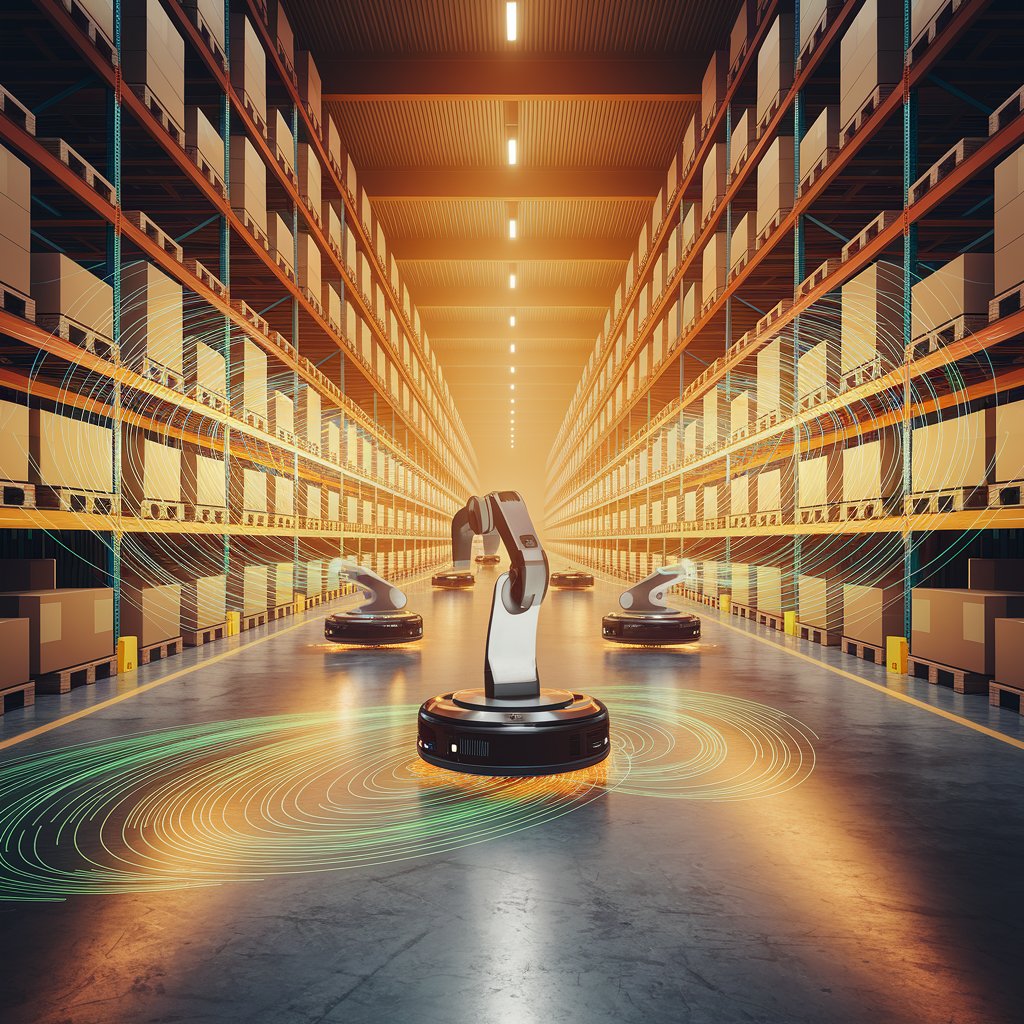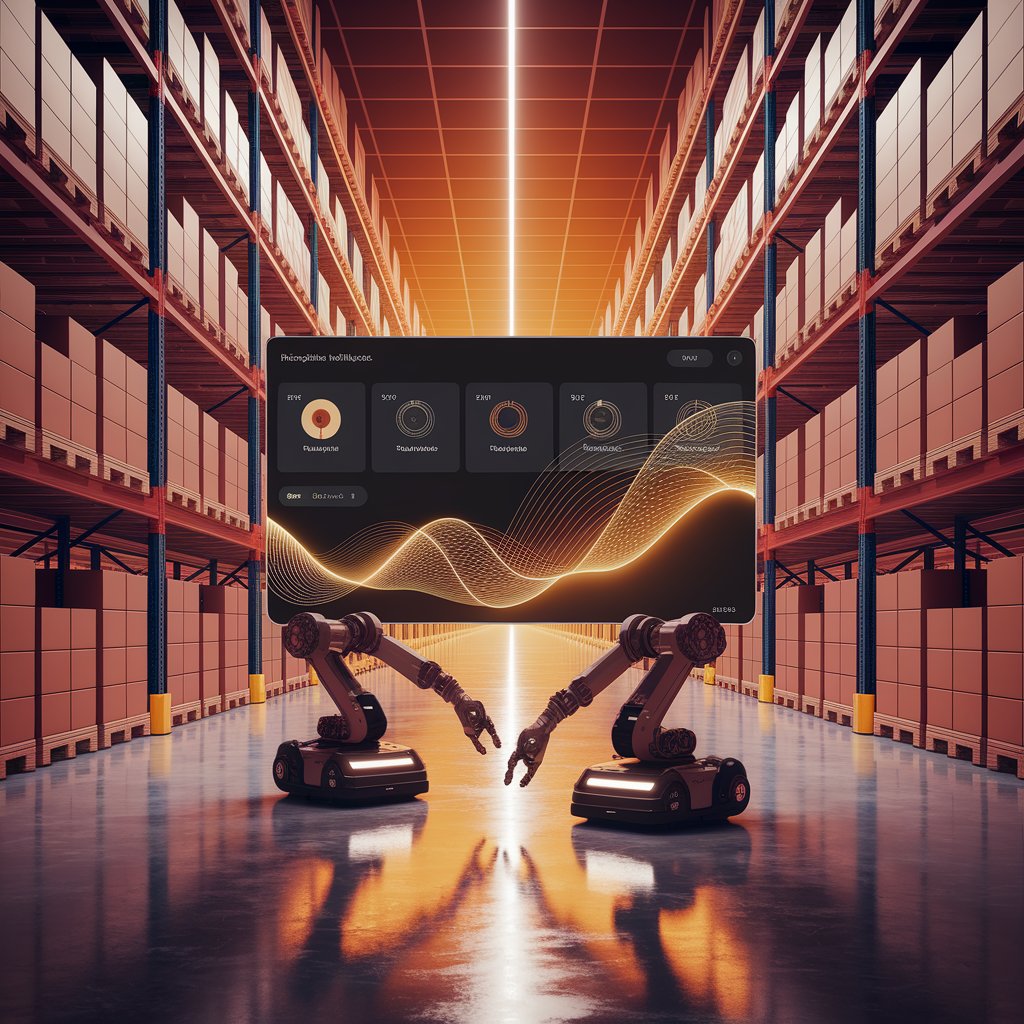AI Warehouse Robotics Integration: Transforming Modern Warehousing

Introduction
That’s where AI warehouse robotics integration comes in. By fusing robotics with AI-driven decision-making, companies can automate complex processes, optimize workflows, and create smarter, more resilient warehouses.
What Is AI Warehouse Robotics Integration?
AI warehouse robotics integration refers to the seamless connection of robotic systems—such as automated guided vehicles (AGVs), robotic arms, and autonomous mobile robots (AMRs)—with artificial intelligence platforms.
AI enables robots not only to execute tasks but also to learn, adapt, and optimize operations in real time. This integration transforms warehouses from static automation hubs into dynamic, intelligent ecosystems.

Key Features of AI Warehouse Robotics Integration
- Autonomous Navigation – Robots use AI for pathfinding and congestion avoidance.
- Dynamic Task Allocation – AI assigns robots tasks based on workload and efficiency.
- Predictive Maintenance – AI analyzes robotics performance to prevent downtime.
- Vision Systems – Robots recognize SKUs, labels, and conditions with AI-powered cameras.
- Integrated Data Dashboards – Unified visibility across WMS, ERP, and robotics systems.
- Scalable Architecture – New robots can be added seamlessly without redesign.
Benefits of AI Warehouse Robotics Integration 📈
- Higher Efficiency – Optimize picking, packing, and put-away operations.
- Accuracy Gains – Reduce human error in inventory management.
- Labor Cost Savings – Support workforce with automation for repetitive tasks.
- Flexibility & Scalability – Scale operations quickly as demand shifts.
- Faster Throughput – Meet rising e-commerce and last-mile delivery demands.
- Sustainability – Reduce energy waste by optimizing robotics movement.

Real-World Applications
- E-commerce Fulfillment Centers – Use AI-powered AMRs for faster order picking.
- Cold Storage Facilities – Deploy robotics to minimize human exposure in extreme environments.
- 3PL Providers – Offer robotics-powered warehousing as a value-added service.
- Retail Distribution Hubs – Automate returns management and shelf replenishment.
- Pharmaceutical Warehouses – Ensure accuracy and compliance in handling sensitive goods.
Challenges in AI Warehouse Robotics Integration
- High Initial Investment – Robotics and AI require significant upfront capital.
- Integration Complexity – Legacy WMS and ERP systems may resist robotics integration.
- Workforce Transition – Employees must adapt to collaborating with robots.
- Cybersecurity Risks – AI-powered robotics systems must be protected from attacks.
- Data Dependency – Poor or fragmented data reduces system efficiency.

Best Practices for Success
- Start with Pilot Projects – Test robotics integration in a single process.
- Ensure System Interoperability – Connect robotics with WMS, ERP, and IoT platforms.
- Leverage AI-Driven Analytics – Continuously optimize workflows with predictive data.
- Train the Workforce – Prepare employees for human-robot collaboration.
- Invest in Cybersecurity – Protect robotics and AI platforms from digital threats.
- Scale Gradually – Expand robotics integration step by step to maximize ROI.
The Future of AI Warehouse Robotics Integration 🚀
- Fully Autonomous Warehouses – Minimal human intervention in daily operations.
- Digital Twin Warehousing – Real-time AI simulations to optimize layouts and flows.
- Collaborative Robots (Cobots) – Robots working side by side with humans.
- Edge AI Robotics – Localized decision-making for faster warehouse responses.
- Sustainability-Driven Robotics – AI optimizing power consumption and carbon footprint.
Conclusion
AI warehouse robotics integration is redefining how modern warehouses operate. By merging robotics with artificial intelligence, companies gain efficiency, accuracy, and scalability while reducing costs and risks.
For e-commerce players, 3PL providers, and global shippers, investing in AI warehouse robotics integration isn’t just about automation—it’s about building intelligent, adaptive warehouses that can thrive in the logistics challenges of tomorrow.
